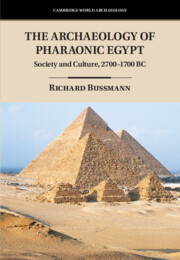Book contents
- The Archaeology of Pharaonic Egypt
- Cambridge World Archaeology
- The Archaeology of Pharaonic Egypt
- Copyright page
- Contents
- Preface
- Chronology of Egypt
- Abbreviations
- Part i Orientation
- Part ii Living Together
- 3 People in Landscapes
- 4 Life in Settlements
- 5 Urban Growth
- 6 Egypt in the Wider World
- Part iii Ritual and Discourse
- Part iv Organising People
- Bibliography
- Index
4 - Life in Settlements
from Part ii - Living Together
Published online by Cambridge University Press: 06 February 2024
- The Archaeology of Pharaonic Egypt
- Cambridge World Archaeology
- The Archaeology of Pharaonic Egypt
- Copyright page
- Contents
- Preface
- Chronology of Egypt
- Abbreviations
- Part i Orientation
- Part ii Living Together
- 3 People in Landscapes
- 4 Life in Settlements
- 5 Urban Growth
- 6 Egypt in the Wider World
- Part iii Ritual and Discourse
- Part iv Organising People
- Bibliography
- Index
Summary
There have been significant advances in settlement archaeology in north-east Africa over the past fifty years.1 The number of excavated settlements has increased substantially, and new fieldwork methods have brought to light settlement remains previously hidden from the eyes of archaeologists (Figure 4.1). Most ancient Egyptians probably lived in villages and rural estates that have long been archaeologically elusive. Larger settlements are gradually appearing on maps of ancient Egypt, but towns represent just one – and not the most pertinent – type of settlement in the archaeological record of the pyramid age. Settlements built for the purpose of the state have left a rather clear footprint on the ground.
- Type
- Chapter
- Information
- The Archaeology of Pharaonic EgyptSociety and Culture, 2700–1700 BC, pp. 58 - 90Publisher: Cambridge University PressPrint publication year: 2023

